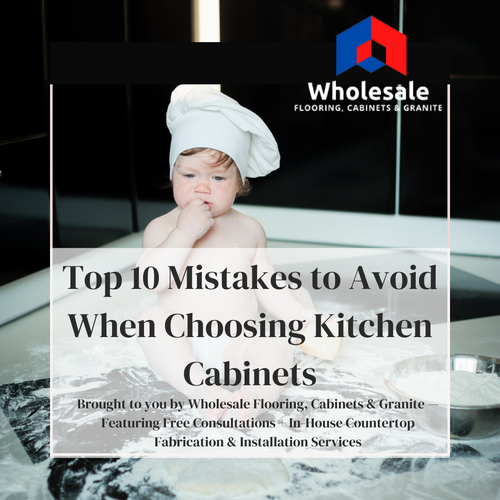1. Choosing Style Over Substance
Let’s be honest—it’s easy to fall in love with a beautiful shaker cabinet or a trendy blue matte finish. But if the cabinets don’t work for how you cook, clean, and store things, that pretty façade won’t matter for long.
Why It’s a Mistake:
Many homeowners regret not thinking practically. Deep cabinets with no internal organizers? Say hello to a black hole of missing Tupperware lids. Tall uppers with no step stool or pull-down shelf? Not helpful if you’re under six feet tall.
What to Do Instead:
Start by outlining how you use your kitchen. Do you need quick access to pots and pans? Hidden storage for cleaning supplies? Think function first, then layer in style. A cabinet should make your life easier—not just look good on Instagram.
2. Ignoring the Work Triangle (and Traffic Flow)
If you’ve never heard of the kitchen work triangle, here’s a crash course: It’s the positioning of your sink, stove, and refrigerator. This trifecta of kitchen design is all about efficiency.
Why It’s a Mistake:
Choosing cabinets without considering workflow can create a cramped or chaotic cooking experience. You might block major appliances with cabinet doors or force yourself to zigzag around the kitchen like a pinball every time you cook.
What to Do Instead:
Design your layout with motion in mind. Place cabinets and drawers where they make sense—silverware near the dishwasher, spices near the stove, trash pullouts near prep areas. And always measure how far doors and drawers open to avoid collisions.
3. Going Cheap on Cabinet Materials
Budget matters—but cheap cabinets often become costly regrets. That pressed particleboard may look okay now, but after a year of moisture, weight, and wear, you’ll wish you spent the extra.
Why It’s a Mistake:
Low-quality materials like MDF with thin veneers can warp, swell, or delaminate—especially near sinks, dishwashers, or coffee stations where water and steam are common.
What to Do Instead:
Opt for materials like plywood cabinet boxes and solid wood faces. They're more durable, longer-lasting, and resistant to daily abuse. At Wholesale Flooring, Cabinets & Granite, we help you balance quality and cost without cutting corners.
4. Underestimating Your Storage Needs
If you’ve ever tried to store a blender in a shallow cabinet or crammed all your baking pans into one drawer, you know this pain. Not planning for enough storage is a kitchen-killer.
Why It’s a Mistake:
Without the right mix of cabinets and drawers, your kitchen becomes cluttered fast. Plus, constantly shifting things around to find what you need? Total time-waster.
What to Do Instead:
Take stock of your lifestyle and appliances. Need space for a mixer? Go for deeper lower cabinets or add an appliance garage. Love bulk Costco shopping? Opt for a pantry cabinet with rollout trays. We help you design for your real life, not just the showroom look.
5. Clashing Cabinet Style with the Rest of the House
Your kitchen doesn’t live in a vacuum. Choosing ultra-modern cabinets in a rustic-style home—or ornate traditional cabinets in a sleek minimalist space—creates visual dissonance.
Why It’s a Mistake:
Mismatch affects not only aesthetics but also resale value. Potential buyers notice when a kitchen feels out of sync with the rest of the home.
What to Do Instead:
Choose a style that complements your home’s overall architecture. Transitional cabinets—a blend of classic and modern—are a great versatile choice. And don’t forget to match finishes on hardware, light fixtures, and appliances to bring everything together.
6. Misjudging Cabinet Height and Spacing
Think cabinet height doesn’t matter? Think again. Too low, and they cramp your counters. Too high, and they’re purely decorative (and practically useless).
Why It’s a Mistake:
Misplaced upper cabinets can throw off your entire kitchen’s balance and leave you with dead space or awkward gaps.
What to Do Instead:
Stick to the golden rule: install upper cabinets about 18 inches above the countertop. Have tall ceilings? Extend cabinets to the ceiling or add a stacked design for extra storage and a luxury look. Pro tip: crown molding is your friend.
7. Skipping Soft-Close Features
It might seem like a minor upgrade, but soft-close drawers and doors add major value to your daily kitchen experience.
Why It’s a Mistake:
Standard cabinet hardware slams shut, which causes faster wear and tear—not to mention lots of unnecessary noise.
What to Do Instead:
Upgrade to soft-close hinges and glides. They're quieter, more durable, and often included in many of our quality cabinet lines at no extra cost. One tap and everything closes gently—yes, please!
8. Choosing Trendy Over Timeless
We see you, two-tone neon cabinets. While trends can be fun, they don’t always age well. What’s hot in 2025 may be cold by 2027—and kitchen remodels aren’t cheap or easy to redo.
Why It’s a Mistake:
Overly trendy choices can date your kitchen fast and limit your home’s resale potential.
What to Do Instead:
Keep it classic with neutral cabinets—white, gray, espresso, or natural wood tones—and add personality through hardware, wall color, or your backsplash. Let trends shine in accents, not the big-ticket items.
9. DIY-ing When You Should Hire a Pro
We love a good DIY project… but installing cabinets is not the place to “wing it.” From measuring to leveling to mounting, one tiny misstep can throw off your whole kitchen.
Why It’s a Mistake:
Poor cabinet installation leads to uneven doors, gaps, poor alignment, and long-term issues like sagging or pulling away from the wall.
What to Do Instead:
Let the pros at Wholesale Flooring, Cabinets & Granite handle it. We offer free consultations, expert measurements, and in-house countertop fabrication and installation services—so everything fits perfectly the first time.
10. Forgetting to Plan for Lighting and Accessibility
Imagine trying to chop veggies in a dark corner or reaching blindly into a deep cabinet. Lighting and accessibility are essential—and often forgotten.
Why It’s a Mistake:
Without proper lighting, even beautiful cabinets can look dull. Poor layout and lack of pullouts or internal organizers make accessing your stuff harder.
What to Do Instead:
Add under-cabinet lighting, interior LED strips, or motion lights inside deep drawers. Incorporate accessibility features like soft-close pullouts, lazy Susans, and trash/recycling drawer combos. Thoughtful extras make a huge difference.


